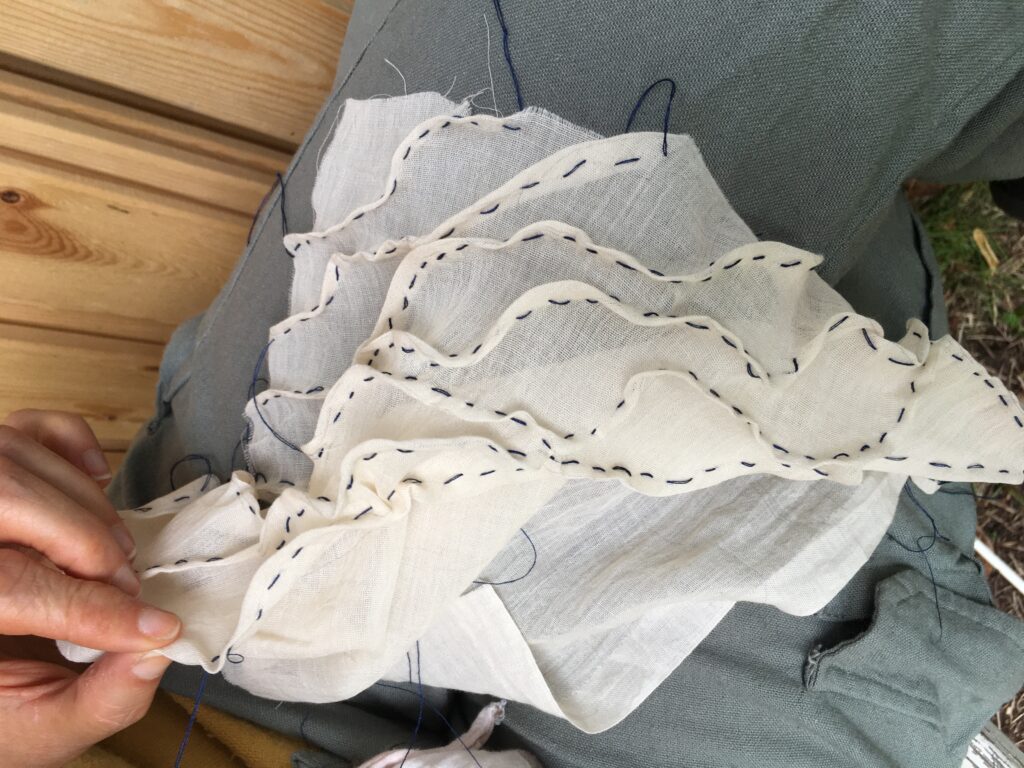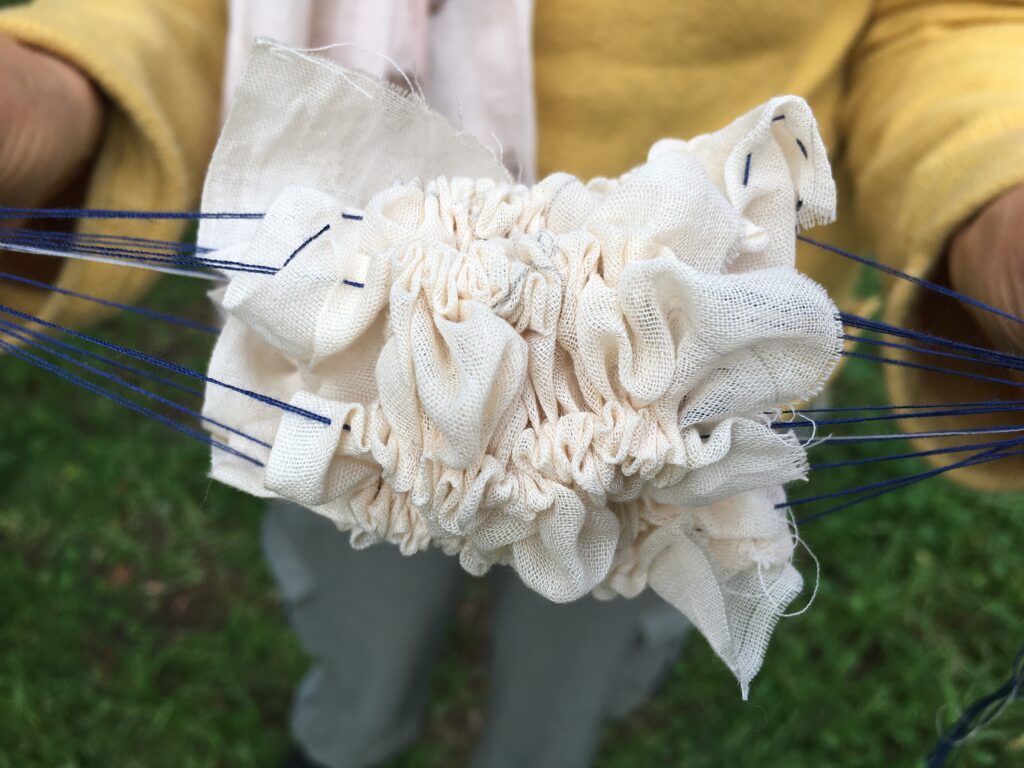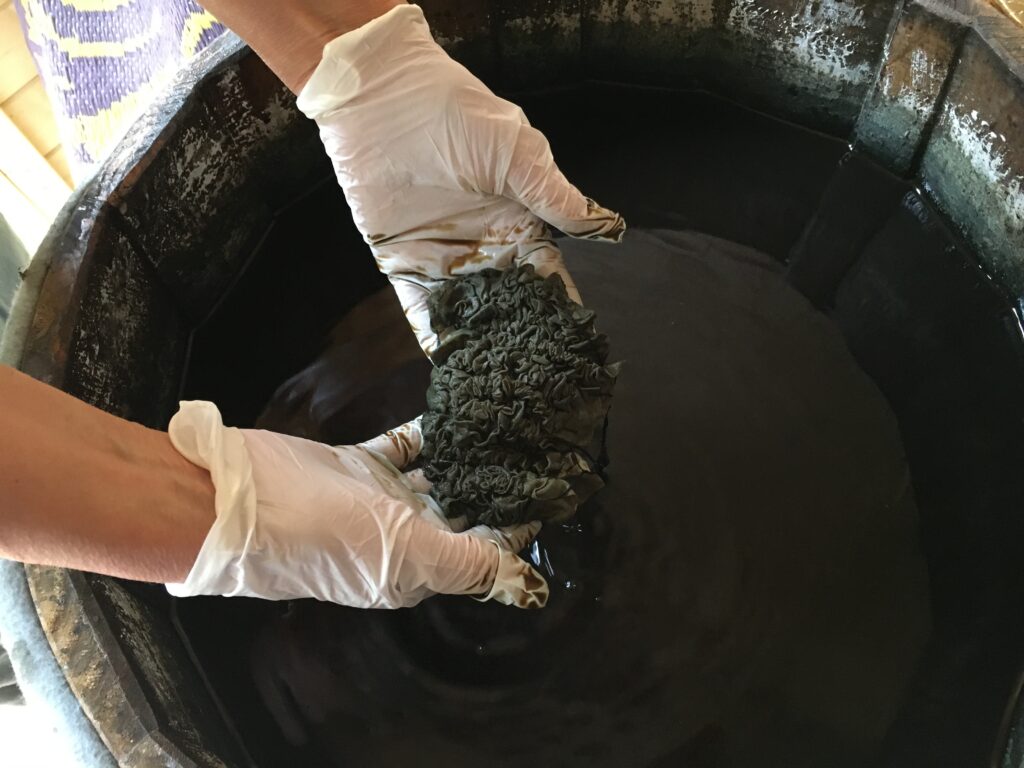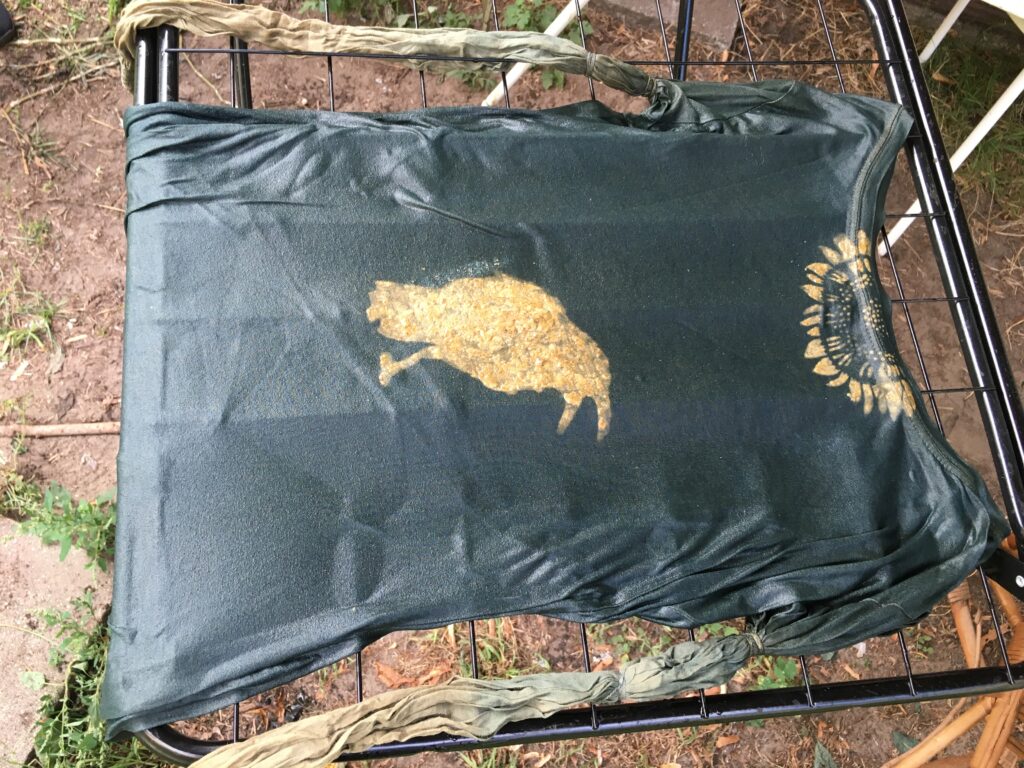
September 20/21
This was one of the last nice still warm and sunny weekend and we had a katazome experiment session with a small group. As we are still trying to find out what is the good way to work with katazome here, it is not a workshop, but rather to try find out a good balance with how to apply katanori/rice resist paste, how to dip fabric in vat and how long to keep it and how long to oxidize it.
My trial of red beet motif on cotton was a complete failure! The fabric was sold as “natural” from naturestoffe lindemann, and even though I cooked it with soda ash for 45min, it was not enough scouring. You could immediately see that the fabric is not taking color and not even. I will have to scour it again and try.
In the mean time, Alina brought her natural color cotton t-shirts, that is washed and prepared well. she printed crow and sun flower motif on the day1, let it dry over night and dyed on the second day. It was a bit tricky to dye as the vat is not deep enough to dip the t-shirt on vertical way (it will touch the bottom sukumo otherwise). With two people, we manage to hold the t-shirt on horizontal way in the vat so it submerges completely and the motif part stays straight without folding to itself. We left the sleeves out as it was too much to handle… Our intention was then to dye only sleeves later. Each dip was 3min long, and we left at least 5min outside for oxidation. At the end, she managed 6 times of dip and it became really nice deep blue. Sleeve was dipped 1 time at the end. The uneven gradation effect on the sleeve came out also very nice.
Sarah tried a nice pattern with red beet and radish with a sunflower in a middle. This was printed on an old cotton napkin. As she wanted to dye on the same day, we used hair dryer to dry the resist paste. Then Sarah had an idea to print sunflower on the back side, at the exact same place so it stays very white… but she had an accident on this second print and it got messed up. She washed it off from the back and dried the fabric… but as she dyed the fabric, the messed up resist on the back was visible. It is still resisting the dye to go in and the middle looked very white. At the end, she decided to not to dip many times and washed it off, so the motif stayed very light blue and white. Maybe we could dye this again to achieve blue/light blue print, or to try printing paste exactly at the same spot… we need to do more experiments.
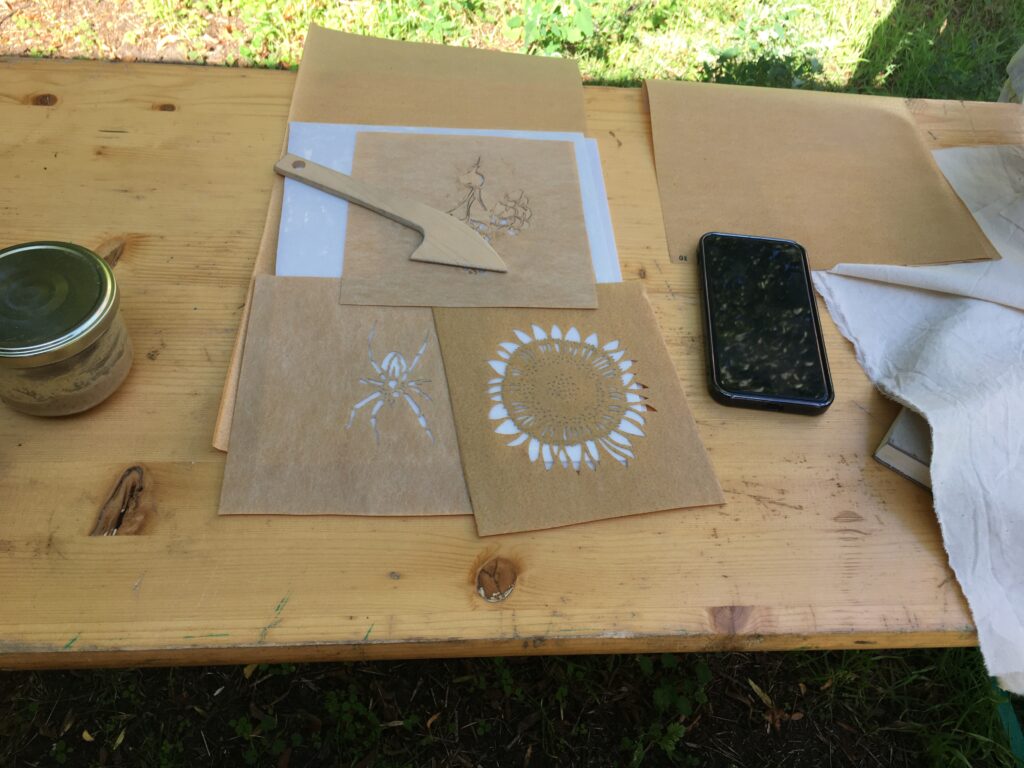
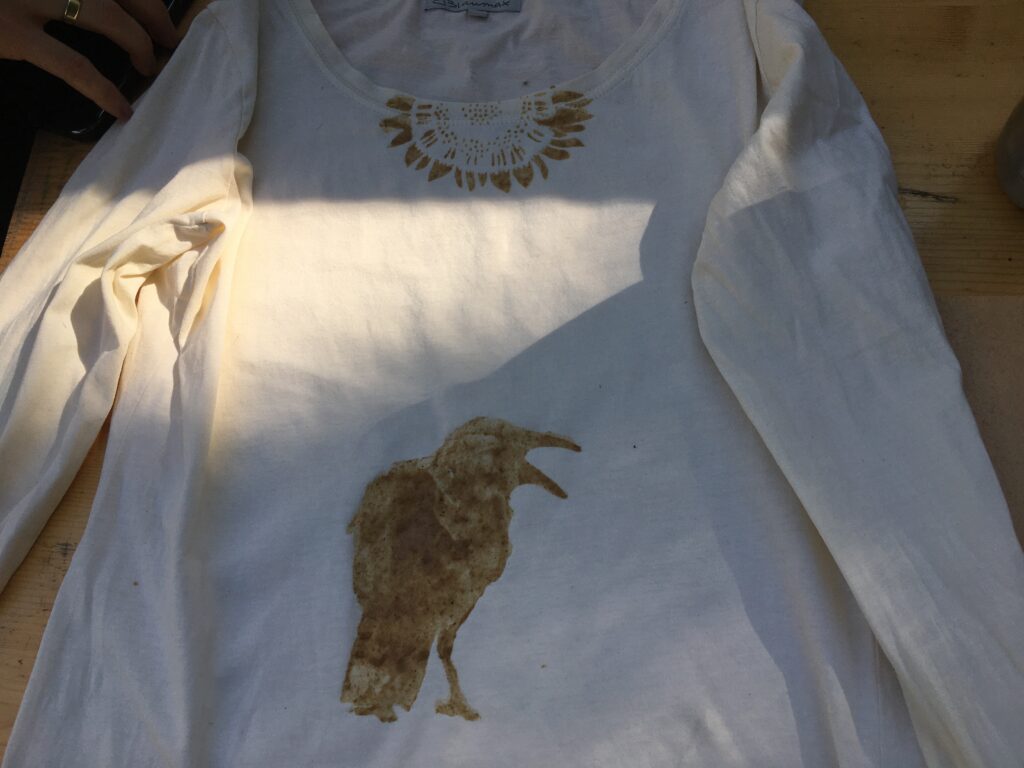
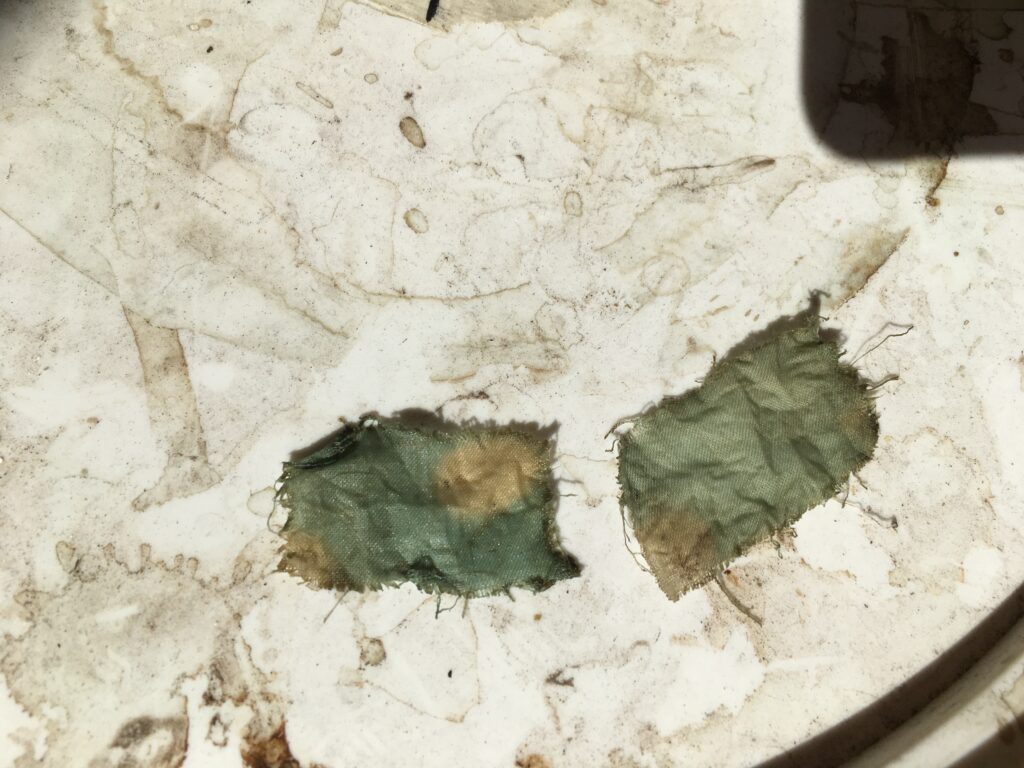
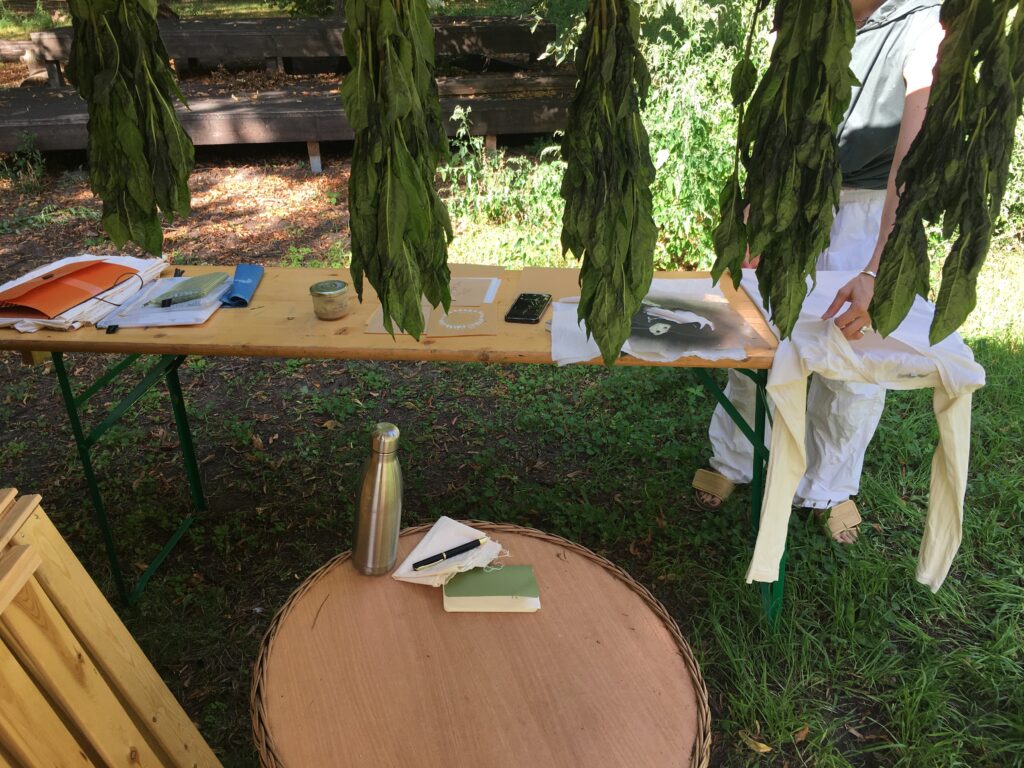
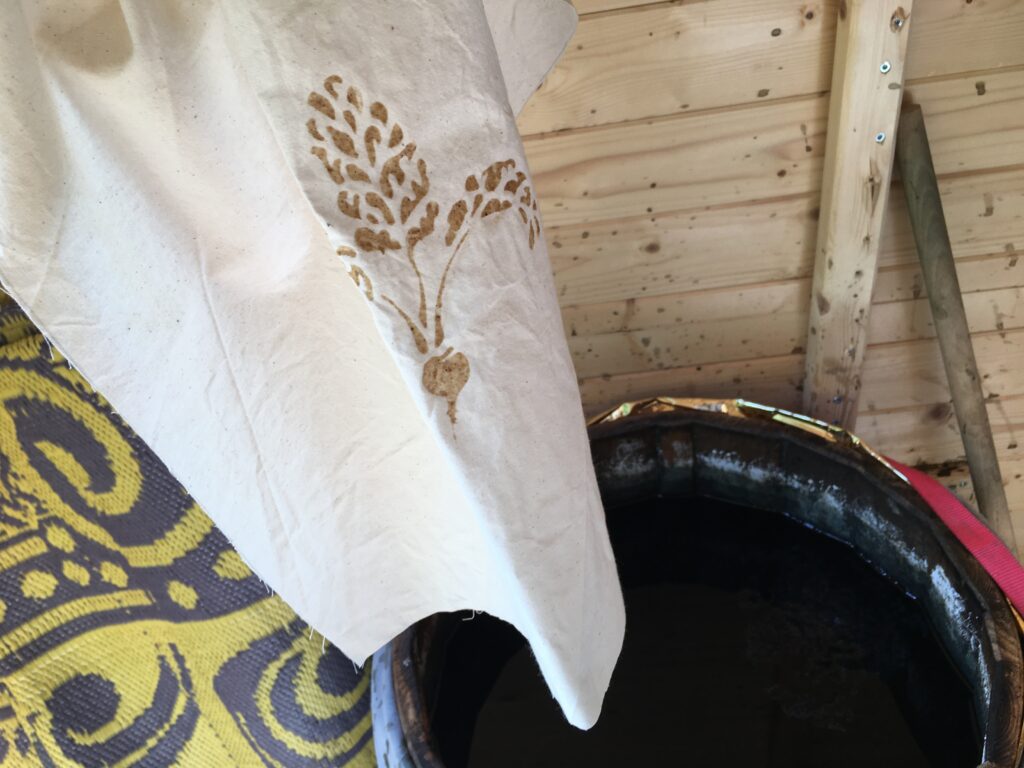
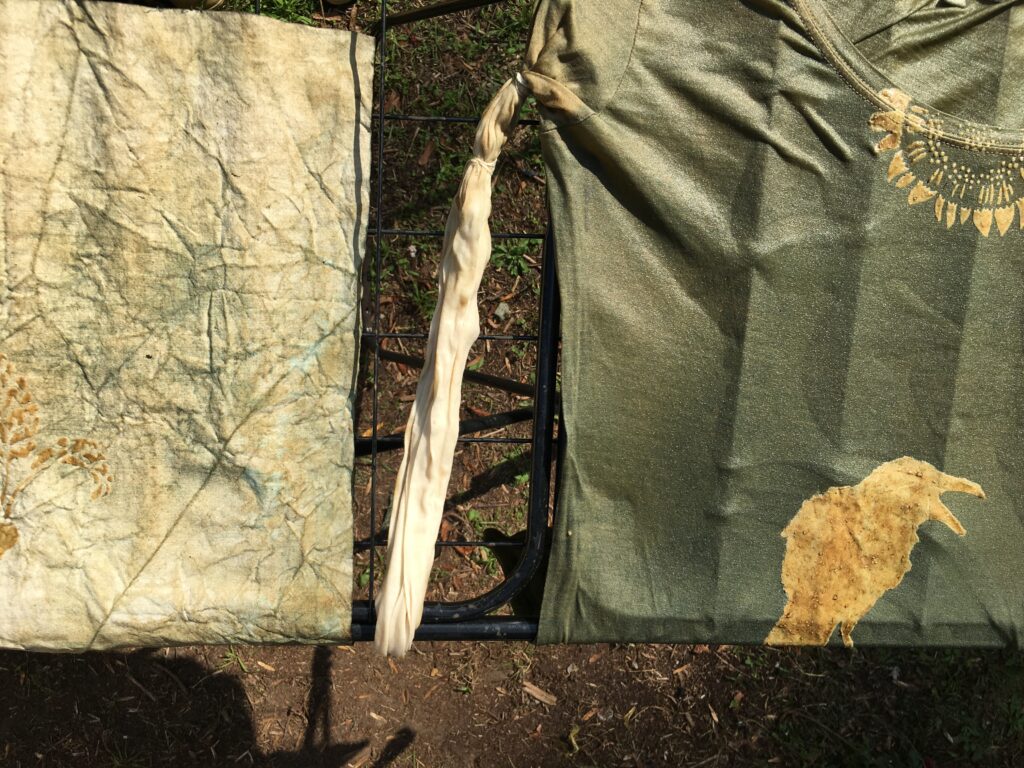
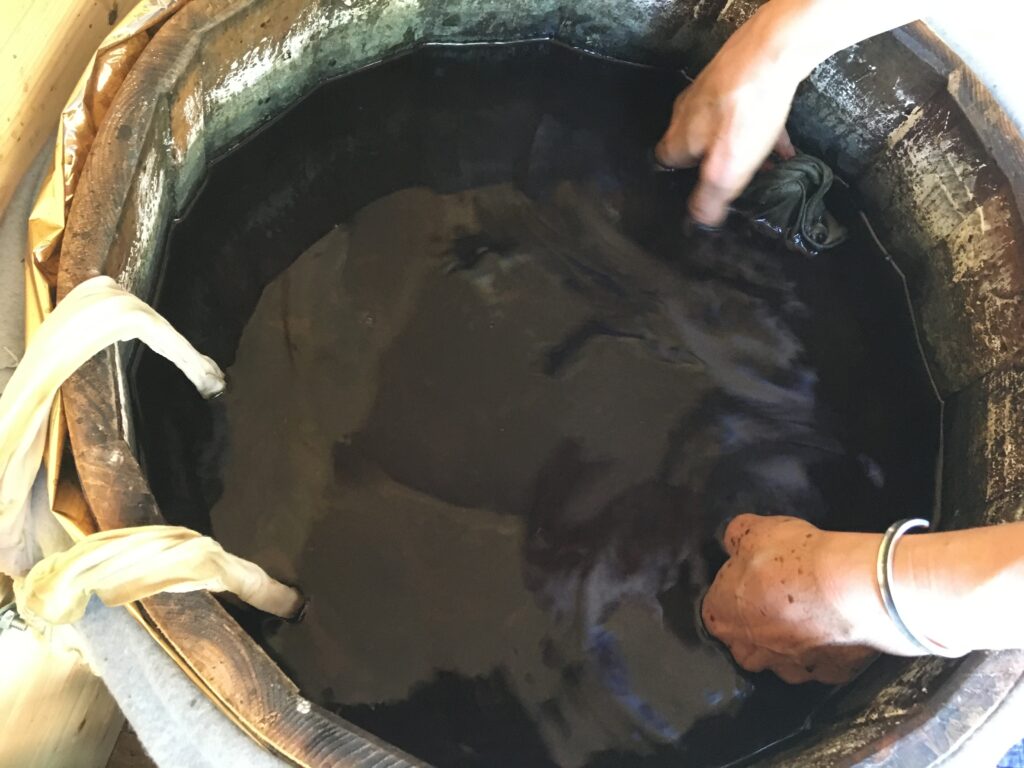
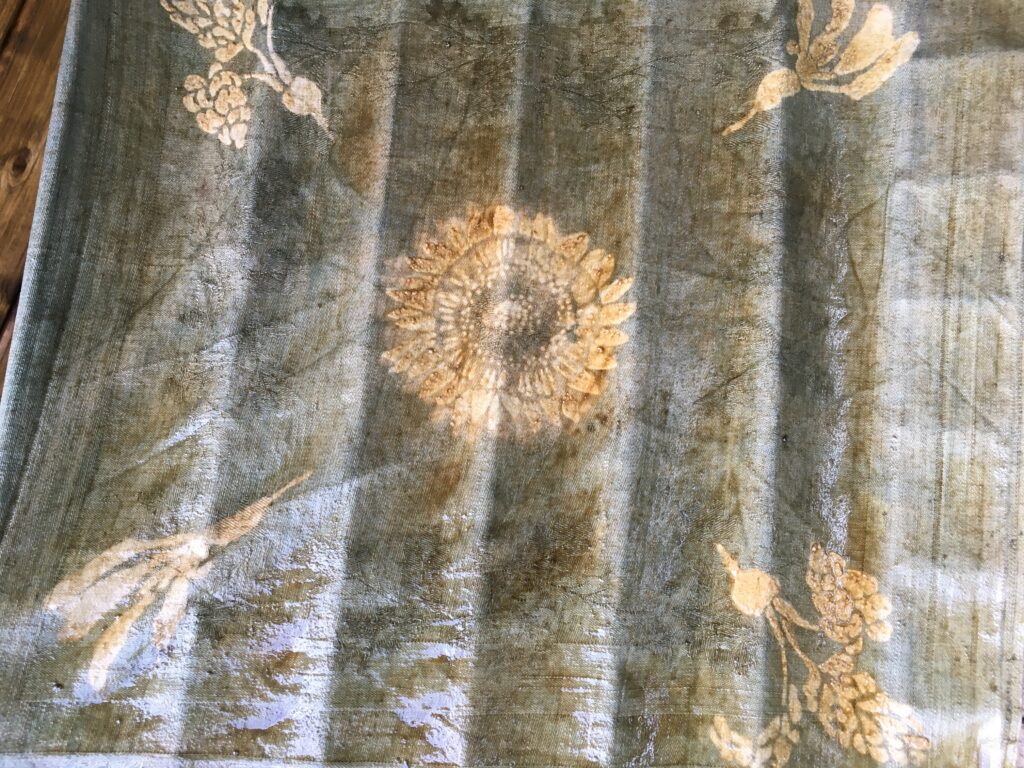
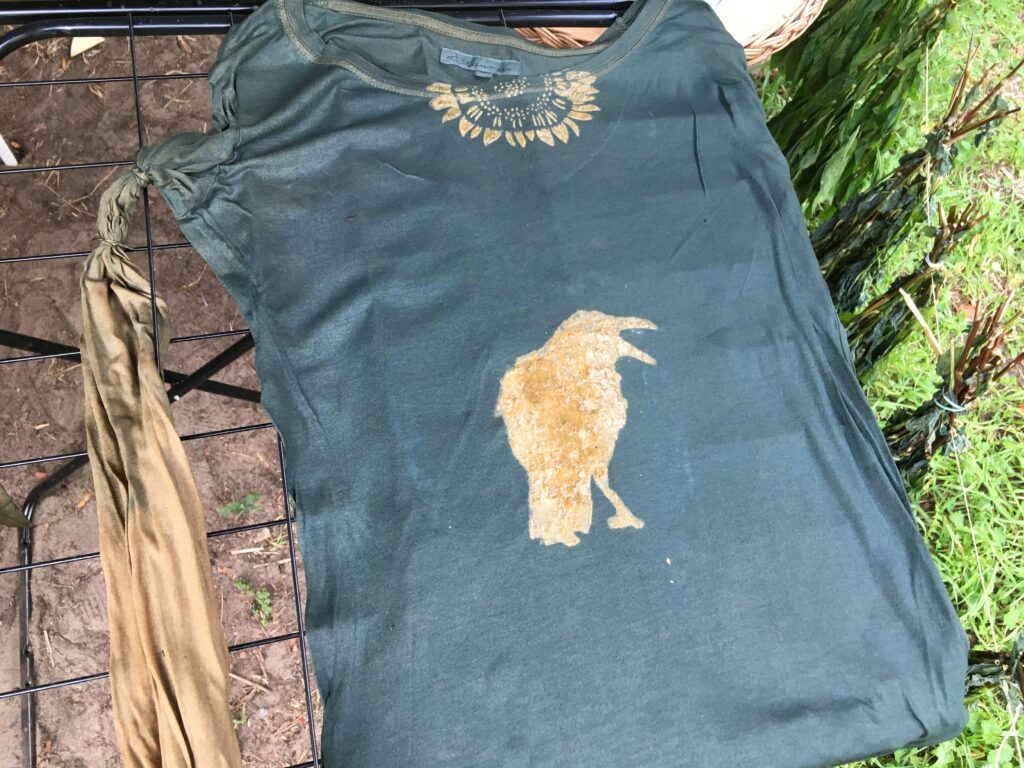
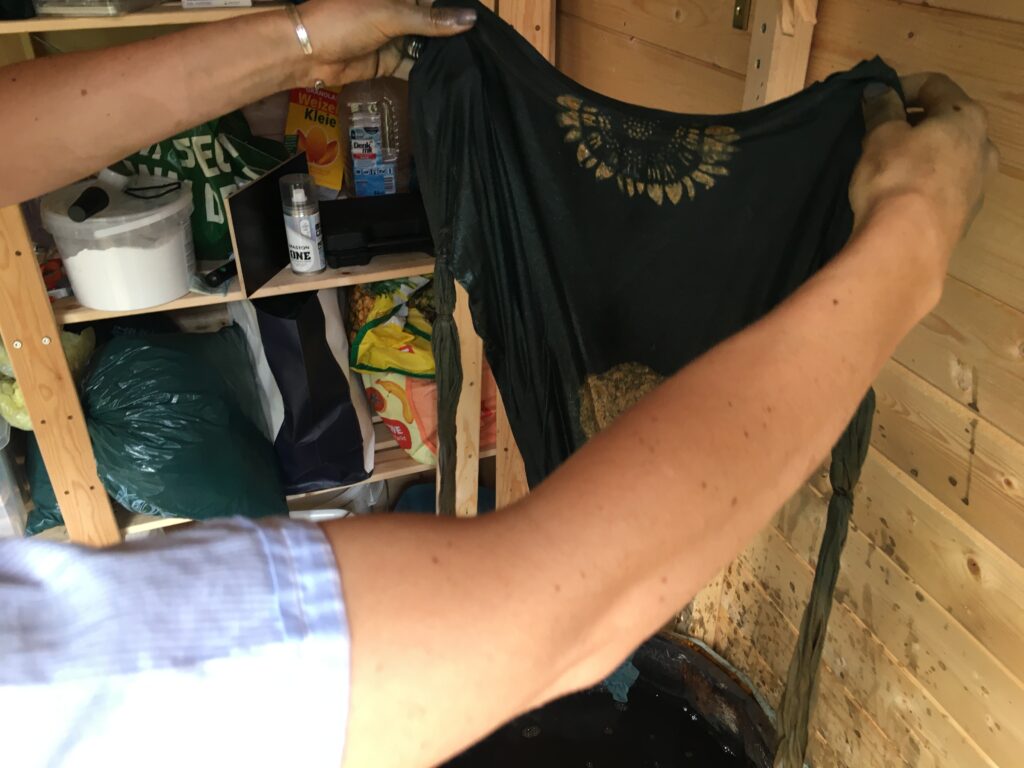
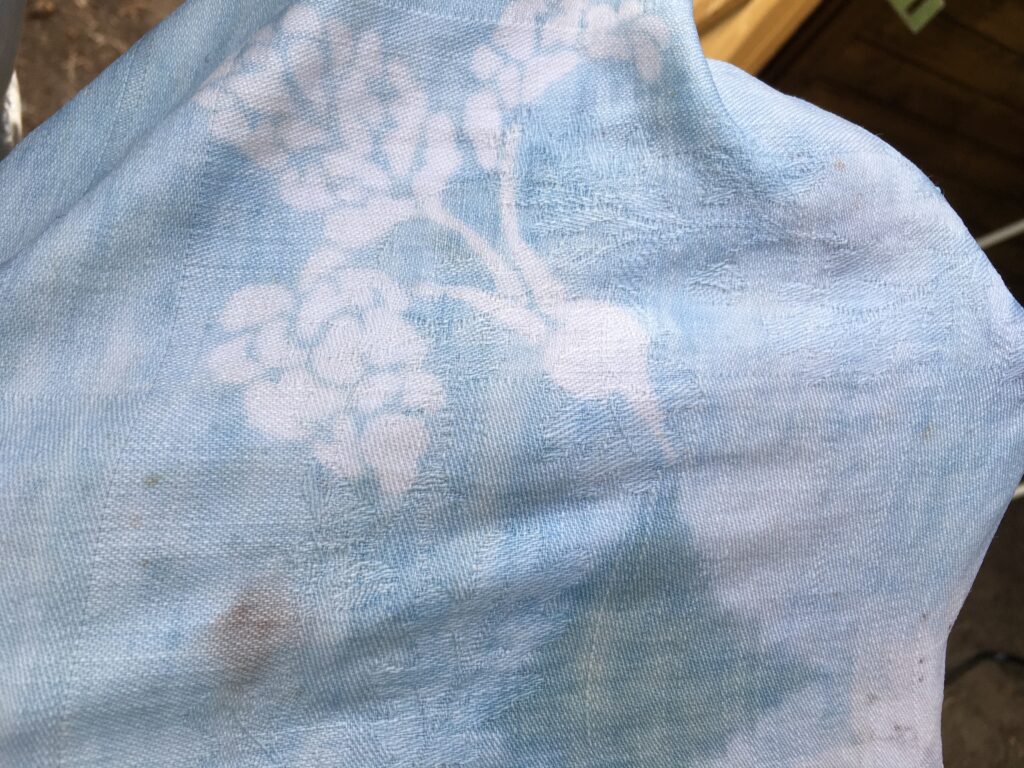
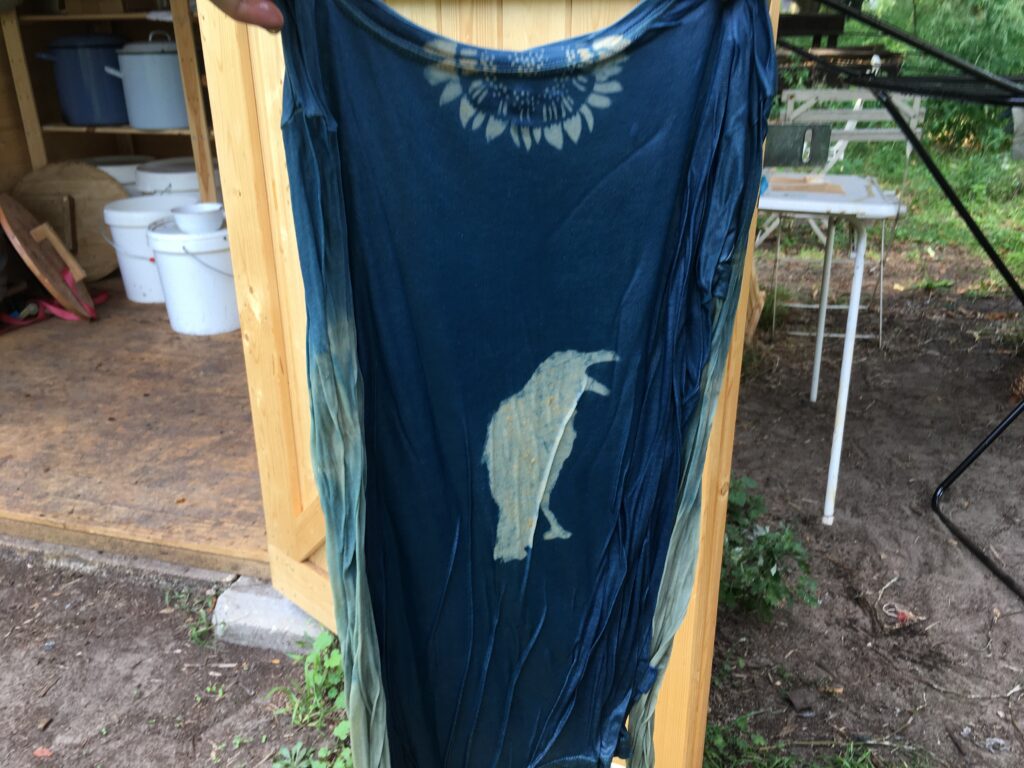
Maria tried Shibori technique she found on the book we have at the Färbehutte. She made a very nice stitch work, then it was pulled to make the “shibori” or squeeze effect then dyed 3-4 times in the vat. As the vat was already getting tired by then, it did not dye very deep. So we decided to keep the shibori without opening in a water bucket, so she can continue dying in the next week. I am curious how this shibori will come out.
